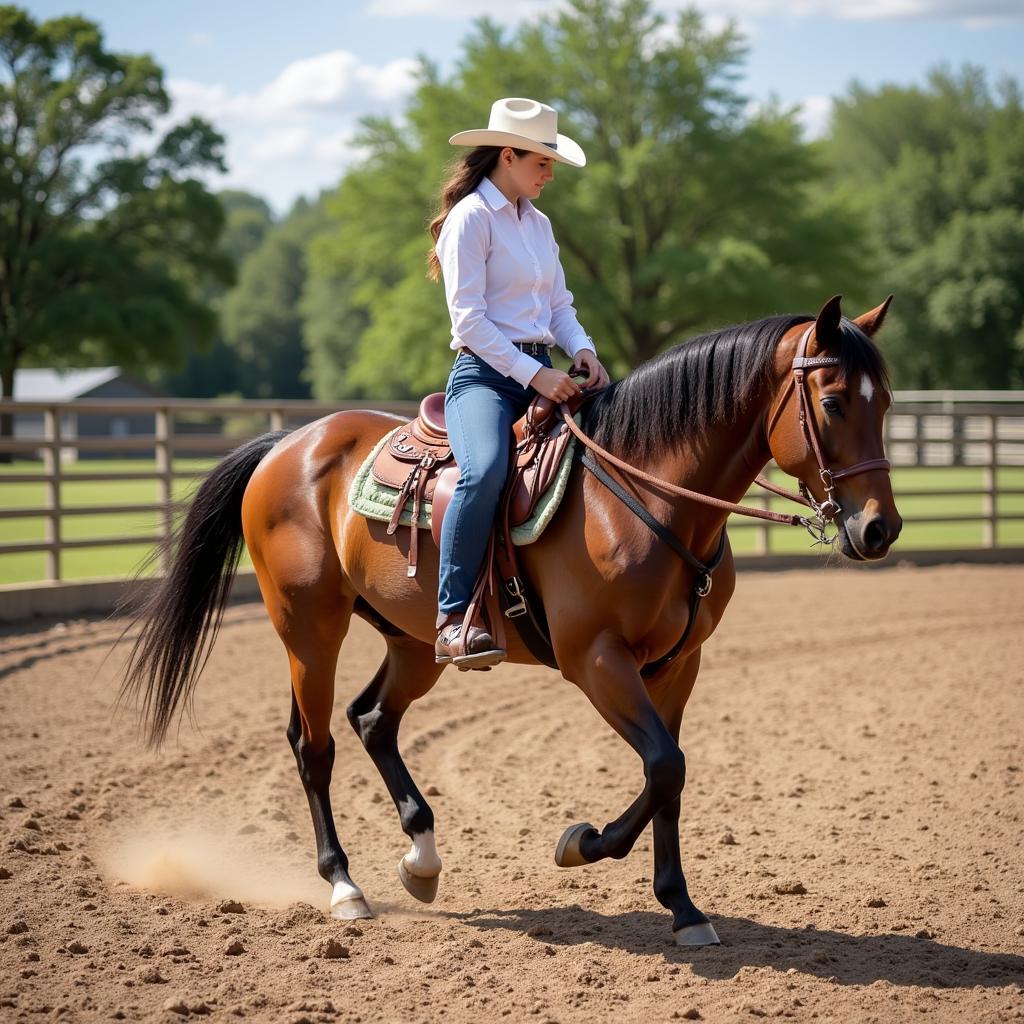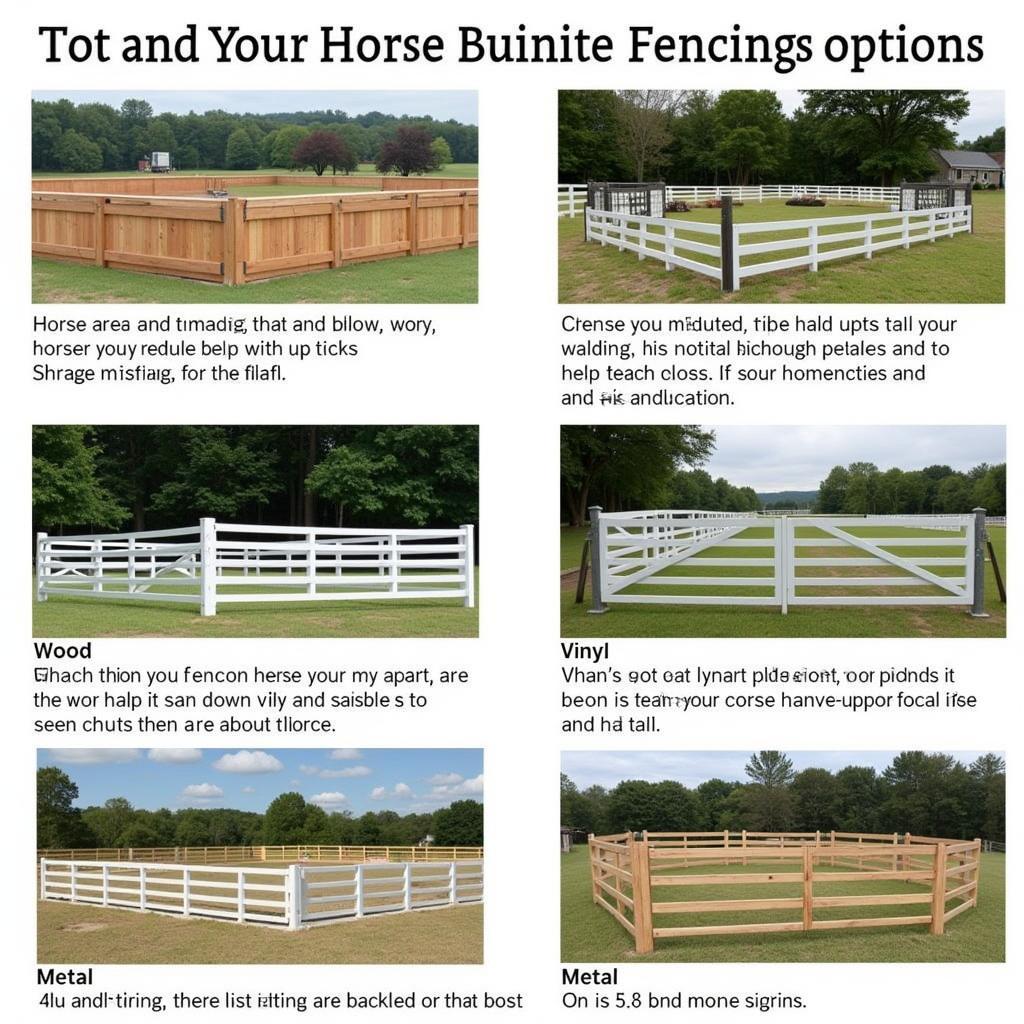Owning a horse comes with the responsibility of providing adequate space for training, exercise, and overall well-being. This is where Horse Arenas come in. A well-designed and properly maintained horse arena offers numerous benefits for both horse and rider, contributing significantly to a safe and enjoyable equestrian experience.
Choosing the Right Horse Arena for Your Needs
Before diving into the specifics of construction and maintenance, it’s crucial to determine the type of arena that best suits your needs. Several factors influence this decision, including your budget, discipline, climate, and available space.
Indoor vs. Outdoor Arenas
indoor horse arenas provide shelter from the elements, allowing for year-round riding regardless of weather conditions. They offer protection from sun, rain, wind, and snow, ensuring consistent training schedules and horse comfort. However, indoor arenas require a larger initial investment and ongoing maintenance costs.
On the other hand, horse riding arenas offer the advantage of natural light and ventilation. They are generally more affordable to construct compared to indoor arenas. However, riders must contend with weather limitations and potential disruptions to training schedules.
Arena Size and Shape
The size and shape of your arena depend largely on your chosen riding discipline. Dressage riders, for instance, may opt for a standard 20m x 60m rectangular arena, while those engaging in reining or cutting may prefer a smaller, square-shaped arena.
 Round Pen Horse Training
Round Pen Horse Training
Round pens, typically 50-60 feet in diameter, are excellent for groundwork, training young horses, and lunging. Their circular shape encourages horses to move forward while the handler remains in a central position.
Key Considerations for Horse Arena Construction
Building a horse arena is a significant undertaking that requires careful planning and execution. Here are some essential factors to consider:
1. Location, Location, Location
The location of your horse arena impacts accessibility, drainage, and sunlight exposure. Choose a well-drained area to prevent waterlogging and ensure a level surface. Consider prevailing winds and sun orientation to optimize riding conditions throughout the day.
2. Footing: The Foundation of Performance
The footing, or riding surface, is arguably the most crucial element of a horse arena. Proper footing provides adequate cushioning, support, and traction, minimizing the risk of injury to your horse.
Common footing materials include sand, geotextile fabrics, rubber, and wood products. Each material offers unique benefits and drawbacks, making it essential to consult with experts to determine the best option for your needs and budget.
3. Fencing: Safety and Security
 Horse Arena Fencing Options
Horse Arena Fencing Options
Secure fencing is crucial to ensure the safety of your horse and prevent escapes. Choose fencing that is visible, sturdy, and tall enough to deter jumping. Popular options include wood, vinyl, and metal fencing, each with its own set of advantages and disadvantages in terms of durability, maintenance, and aesthetics.
Maintaining Your Horse Arena for Optimal Performance
Regular maintenance is crucial to preserve the integrity and longevity of your horse arena. Implement a routine maintenance schedule that includes:
- Dragging and Leveling: Regular dragging levels the footing, removes debris, and prevents compaction.
- Watering: Proper watering is essential to maintain optimal moisture levels in the footing, preventing dust and providing adequate cushioning.
- Footing Replacement: Over time, the footing material will need to be replenished to maintain its quality and depth.
Finding Horse Riding Arenas Near You
For those who don’t have the space or resources to build a private arena, numerous public and private horse riding arenas near me offer access to quality facilities. These arenas often provide a variety of disciplines, lessons, and events, catering to riders of all levels and interests.
Conclusion
Investing in a well-designed and properly maintained horse arena is an investment in your horse’s well-being and your overall riding experience. By carefully considering your needs, conducting thorough research, and seeking expert guidance, you can create a safe and enjoyable space for you and your equine partner to thrive.
FAQs About Horse Arenas
1. What is the best footing for a horse arena?
The best footing depends on factors like discipline, budget, and climate. Common options include sand, rubber, and wood products. Consult with experts to determine the ideal material for your specific needs.
2. How often should I drag my horse arena?
Dragging frequency depends on usage. As a general rule, drag your arena after every few rides or at least once a week to prevent compaction and maintain a level surface.
3. Can I build a horse arena myself?
While it’s possible to DIY some aspects, it’s recommended to consult with professionals for tasks like grading, footing installation, and fencing. They have the expertise to ensure proper construction and safety.
4. How much does it cost to build a horse arena?
The cost varies widely depending on size, materials, location, and labor costs. Indoor arenas are generally more expensive than outdoor arenas.
5. How do I choose the right size horse arena?
Consider your chosen riding discipline and the number of horses using the arena. Standard sizes vary, but larger arenas offer more flexibility and safety.
For further information on horse care, training, and equestrian properties, browse our other informative articles at Justus Horses USA. We offer a wide range of resources to support your equestrian journey.
If you need assistance with finding the perfect equestrian property or have questions about horse care, contact us at Phone Number: 0772127271, Email: [email protected]. Or visit us at: Address: QGM2+WX2, Vị Trung, Vị Thuỷ, Hậu Giang, Việt Nam. We have a dedicated customer support team available 24/7 to assist you.